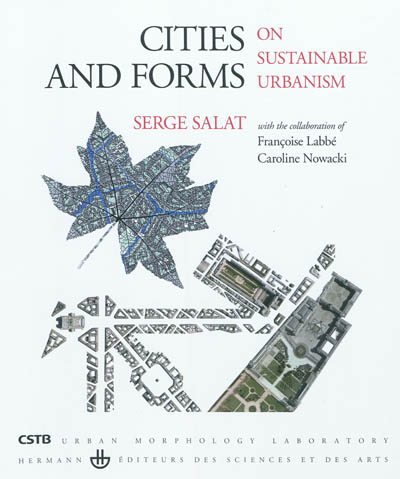en savoir plus

Carte fidélité
Permet à tous ses détenteurs d'obtenir 5% de réduction sur tous les livres lors du retrait en magasin (réduction non cumulable avec les réductions de type étudiant).
Offre également un certain nombre d'avantages auprès de nos partenaires.
Wishlist
Avec les favoris, retrouvez dans un espace les sélections effectuées au fur et à mesure de vos navigations dans le site.
Constituez pour votre usage personnel vos listes de livres en prévisions d'achats futurs et votre sélection d'articles, dossiers, événements, vidéos ou podcasts préférés ou à découvrir plus tard...
Il suffit simplement de cliquer sur "Ajout Favori" sur chaque page qui vous intéresse pour les retrouver ensuite dans votre espace personnel.
Requiert un compte Mollat
Mes Alertes
Requiert un compte Mollat
Cities and forms : on sustainable urbanism
Auteur : Serge Salat
en savoir plus
Résumé
A travers deux millénaires d'histoire urbaine en Orient et en Occident, la ville durable du futur est esquissée. Les notions de densité, de connectivité, de mixité ou encore d'accessibilité sont présentées scientifiquement à partir des tissus urbains historiques. ©Electre 2025
Lire la Quatrième de couverture
Réduire la Quatrième de couverture
Cities and Forms probes the crucial issue of the shape to give to sustainable cities in the future. It unfolds a rich mosaic of two thousand years of urban history in the East and in the West through 1,200 drawings, city plans, and photographs, all of which is coorelated with thousands of results of original analyses for a wide range of urban textures, from Siena and Venice to New York, Brasilia, Tokyo, Beijing, and Shanghai, Cities and Forms also features a detailed comparative study of Haussmanian Paris and Le Corbusier's Radiant City, and an in-depth analysis of Chinese cities.
This book provides a measurable scientific dimension to such essential notions of sustainable urbanism as density, connectivity, functional mix, and accessibility, by exploring the qualitiesof historical urban fabrics. Readers will become familiar with organic patters, grids, transformations, and the hidden order and fractal symmetries that connect urban scales, and endow the city with a meaningful, human order, which fosters social integration and cultural diversity,appropriable by residents but at the same time structured like an ecosystem.
Morphology appears in this book as the key lever for cities to adapt to climate change.
It enhances efficiency by cutting energy consumption in half. The connectivity of city networks reinforces urban resilience, on the model of such natural structures as the hierarchic, intensely connected network of nervures in leaves.
Cities and Forms develops a method of urban composition founded on perceptive qualities, and the design of public spaces, squares, streets, and visual sequences. It forms the bases of a return to the city as a place of memory and history, and of a controlled relationship between the urban fabric and building typology.
By the abundance of its nex findings, its methods and its concrete application of complexity theories, this book is of utmost importance to architects, urban planners, decision-makers, and anyone eager to understand sustainable cities and contribute to their development.
Fiche Technique
Paru le : 22/09/2011
Thématique : Monographies sur les villes
Auteur(s) : Auteur : Serge Salat
Éditeur(s) :
Hermann
Centre scientifique et technique du bâtiment
Collection(s) : Non précisé.
Contributeur(s) : Collaborateur : Françoise Labbé - Collaborateur : Caroline Nowacki - Traducteur : Gila Walker - Préfacier : Sylvie-Agnès Bermann - Préfacier : Bertrand Delcambre
Série(s) : Non précisé.
ISBN : 978-2-7056-8111-1
EAN13 : 9782705681111
Reliure : Broché
Pages : 543
Hauteur: 28.0 cm / Largeur 24.0 cm
Épaisseur: 3.3 cm
Poids: 2538 g
